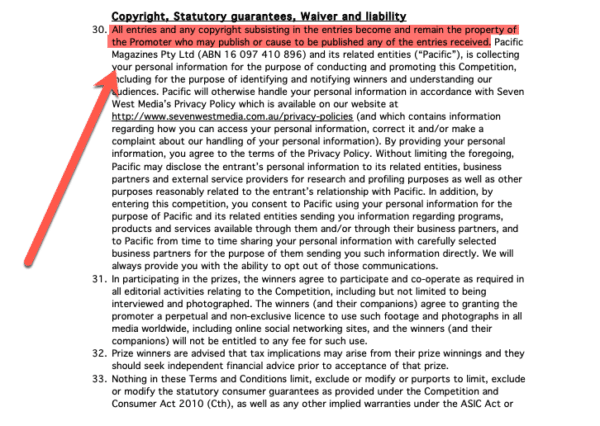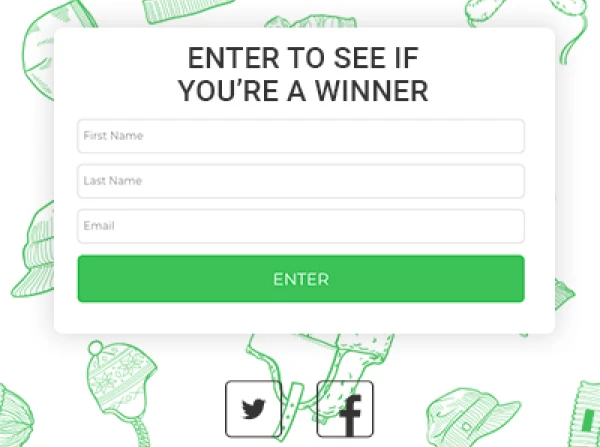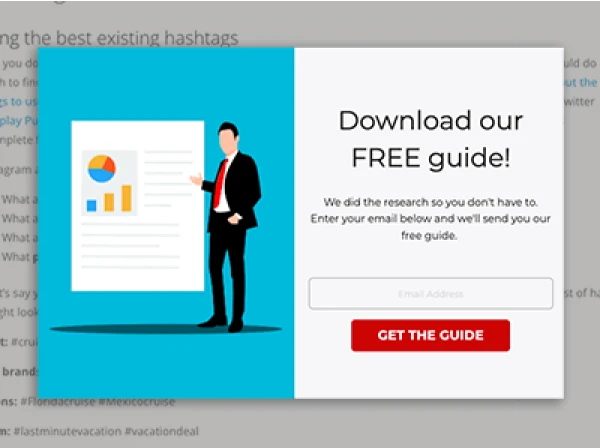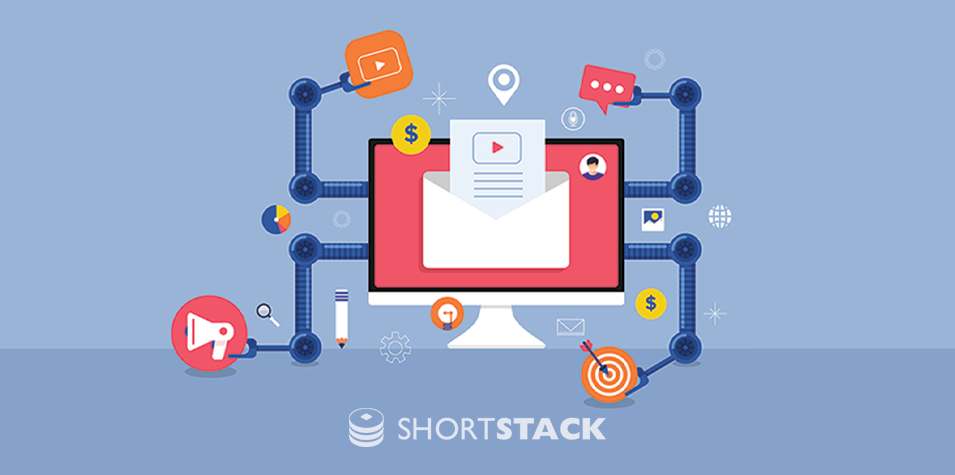User-generated content (UGC) is more than a mere internet buzzword; many experts believe that it's the future of marketing.
In fact, UGC is 35% more memorable than other media such as ads or brand-created content, and 50% more trusted.
Could your followers be your most effective marketing tool?Read on to learn more about user-generated content and its inevitable takeover.
What Is User-Generated Content?
User-generated content (UGC) refers to any type of media that is created by a brand's followers or consumers, rather than by the company itself.Fans create UGC without any expectation of pay, although they may participate in contests in the hopes of winning some sort of prize.Generally, however, users' motivation to create content derives from their desire to play a greater part in a brand's community of followers.
What Are the Benefits of UGC?
User-generated content resonates with consumers because it doesn't come from a purely promotional perspective. Rather, UGC reflects the true feelings of relatable individuals who actually use marketed products or services.The real genius of UGC, however, is that it transforms consumers from passive viewers into active advertisers. Depending on how the content is promoted and curated, this active involvement can produce considerable ROI for your business.
Types of UGC
While UGC is typically associated with social media, it can take several forms.A few of the most common types of UGC include:
Social Media Photos
Perhaps the most obvious and most effective form of user-generated content, photos on Instagram serve as valuable social proof.The LEGO brand, under the hashtag #LEGO, inspires UGC creations from all sorts of customers:

An example of LEGO's UGC.Of course, Instagram isn't the only valid platform for sharing UGC; content shared via Facebook, Pinterest, and even Twitter can also have an impact.
Videos
Platforms like YouTube and Vimeo provide a myriad of opportunities for passionate consumers to share their voice. Unboxing videos, in particular, can create an instant buzz as consumers join the zeitgeist surrounding a particular product.There are hundreds of YouTube channels dedicated to the unboxing phenomenon, some with gigantic followings. For example, the channel “Unbox Therapy” has over 13 million followers:

YouTube unboxing channel.Having your product featured, in a positive light, by one of these YouTubers could skyrocket your brand awareness.Other YouTube users create what are called haul videos, where they show off a variety of products purchased from a favorite store. These are less focused on each individual product but can still be good for increasing your exposure to potential buyers.
Blog Posts
A classic, yet still effective, means of generating a close-knit community of consumers, blog posts allow users to fully describe their love for a given brand. These often come in the form of product comparisons, in-depth reviews, or off-the-cuff mentions of your business.It’s rare to see a genuine review of a product or service on a blog, with most bloggers being paid for the article, or receiving a referral commision from the brand being reviewed. That being said, they are still a powerful form of UGC.Below is a product review of the pet camera Furbo which ranks on the first page of Google for the search term “Furbo review”, a phrase that attracts over 1,600 monthly searches:

Blog post review as UGC.
Customer Reviews
Today's consumers demand social proof and, subsequently, they research products and services meticulously before making a purchase or signing a contract.Sites such as Amazon, Yelp, and TripAdvisor make it easy for consumers to leave honest feedback. The occasional bad review shouldn't prompt too much damage - but brands face a far greater battle if they can't convince users to leave reviews at all. As far as consumers are concerned, brands that lack reviews may as well be invisible.Beauty brand Frank Body, for example, has a page dedicated to displaying over 5,000 customer reviews on their website:

Customer Reviews as UGC.
How to Use UGC For Your Business
An effective UGC campaign begins with a detailed analysis of what, exactly, appeals to users - and the type of content they're most likely to share. On Facebook, for example, BuzzSumo research found that video content attracted more engagement than other typical formats:

BuzzSumo statistics about Facebook engagement.It's also important to determine your campaign goals. Some campaigns are launched purely for the purpose of gaining new followers, while others may be intended to convert existing followers or reposition a brand's identity.Goal and target audience identification should be followed by the content solicitation. This can take many forms. With some campaigns, solicitation is as simple as seeking Instagram photo submissions accompanied by a branded hashtag.Fast-growing watch brand MVMT use the hashtag #jointhemvmt, which they promote on their Instagram page, to collate UGC. The hashtag has been used over 130,000 times on Instagram alone:

A UGC hashtag on Instagram.Other campaigns may include more detailed instructions. These can be explained in-depth on a webpage, which is then linked to via a social media update.National Geographic, for example, has a program called “Your Shot”, where they encourage photographers to contribute photos with the chance of being featured in a collated story on their website:

Example of UGC on a website.Some element of content curation may be necessary to ensure that quality submissions rise to the top. Quality doesn't necessarily infer glowing reviews of your brand, however - remember, the goal is always to deliver an authentic message.Still, offensive or confusing submissions will occasionally arise. Depending on the nature of your campaign, you should try to sidestep these entries and focus on those that accurately capture your brand's identity.
UGC Mistakes to Avoid
User-generated content can provide considerable marketing ROI, but only if implemented strategically. In their eagerness to jump on this marketing trend, many organizations have made costly mistakes that compromise the connection they've worked so hard to cultivate.Mistakes worth avoiding include:
Publishing Content Without the User's Express Permission
Clear consent is absolutely essential, particularly for content not freely shared on social media. Failure to obtain consent would constitute a huge violation of trust, thereby destroying the authenticity that UGC is intended to deliver.Securing consent to publish UGC can actually prove quite simple. Contribution rights should be clearly detailed in the campaign's terms and conditions, as should distribution rights. In most cases, contributors will be thrilled to share their perspective and will not take issue with content being published on your brand's behalf - so long as they are made aware of this in advance.Here is an example of the brand Practical Parenting gaining this permission in the terms of their social media contest:

UGC permission in a contest
Seeking Perfection
Many brands claim to prioritize UGC, only to limit their selection to what they perceive as the most attractive consumers. This approach is not likely to resonate with followers, who prefer UGC to appear 100% authentic and genuine.
Abandoning Your Brand's Identity
Your brand may appeal to a wide range of consumers, but not all are ideal for UGC campaigns. While there is value in sharing the perspectives of several types of customers, you'll want to avoid content from those who clearly do not abide by your brand's core philosophy. This, of course, can be challenging because you don’t control the content. However, you can create rules and structure for your initial campaign that minimize the risk of it getting out of control.
Giving Consumers Too Much Power
The phrase 'too much of a good thing' can easily apply to poorly-executed UGC. Remember, the consumers who highlight your brand aren't perfect - they have their own flaws, which could cast a shadow on your campaign if you grant them too much power over your message.A lighthearted example that could hold darker implications can be seen when the United Kingdom's National Environment Research Council sought assistance with naming a research vessel in its #nameourship campaign.Unfortunately, followers overwhelmingly voted for ‘RRS Boaty McBoatface.' Thankfully, a previously established disclaimer allowed the council to avoid this name. Imagine, however, if the winner hadn't been as silly as Boaty McBoatface, but rather, something truly offensive?
Conclusion
User-generated content could completely transform how consumers relate to your brand. It's the future of internet marketing - and only ignored at your brand's peril.Embrace this opportunity, and you'll be rewarded with a perfect blend of brand awareness and customer loyalty.
Put the power of hashtags to work.Create your first contest or giveaway free.
Get Started Today. No credit card required. Risk-free.
About the author
Will Blunt is the founder of Sidekick Digital by Will Blunt - B2B Marketing Expert - Sidekick Digital, a publishing business that launches, manages, and grows brands with content marketing.
Recent posts
Go back to blogGet marketing tips straight to your inbox
Launch an irresistible giveaway. Get started for free.
Join 630.000+ marketers that are boosting engagement and sales.













